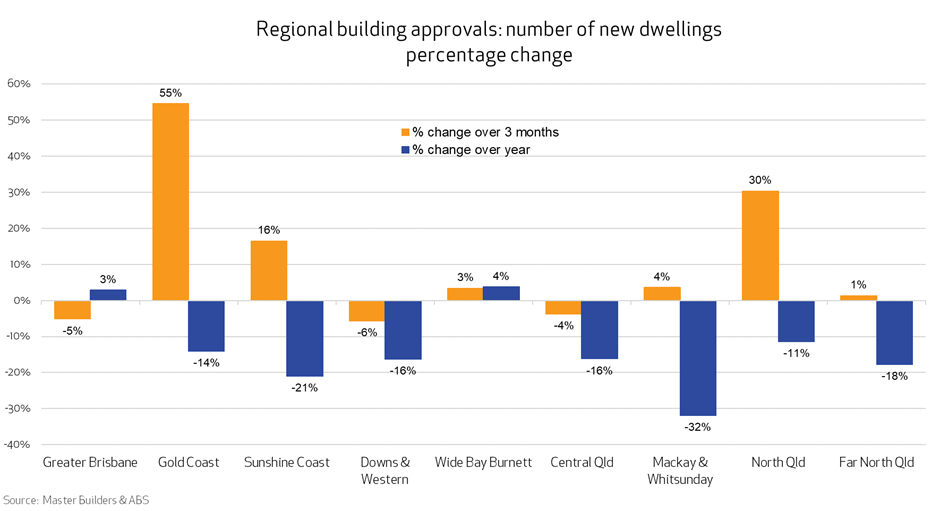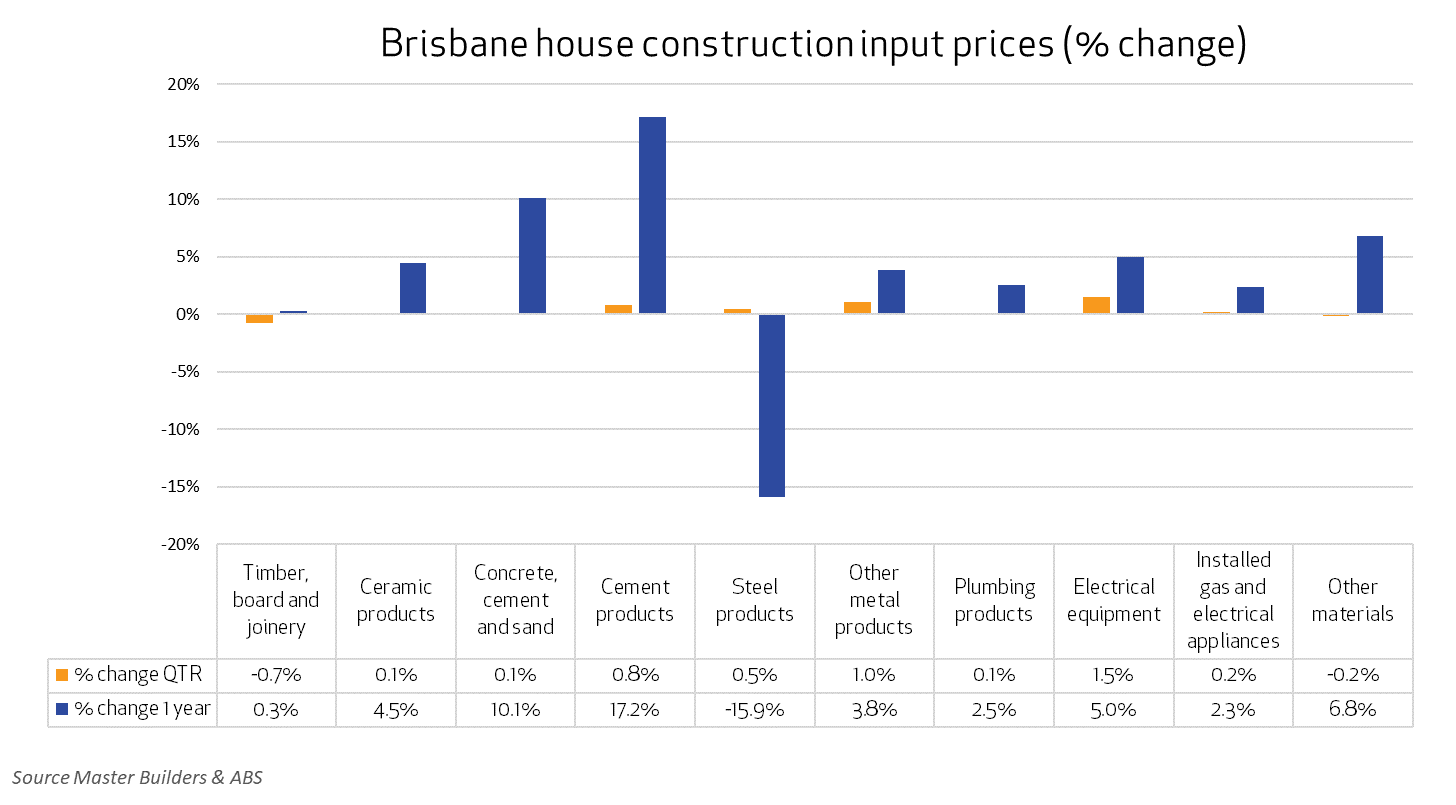15 February 2024
A December uptick in approvals for multi-unit dwellings led a jump in Queensland’s building approvals – but the state is still moving at a snail’s pace towards the national five-year target.
An uptick in approvals for multi-unit dwellings led a jump in Queensland’s overall building approvals in December – but the state is still moving at a snail’s pace in the race to reach the national five-year target for new homes.
The Australian Bureau of Statistics (ABS) recorded a 7.5 per cent total increase in house and unit approvals in the preceding three months to December 2023.
These short-term strong results are thanks to an increase in approvals for units on the Gold Coast and Sunshine Coast. North Queensland is also posting strong approvals (+30.4 per cent) with the remaining regions largely unchanged.
Approvals for non-residential building work are now trending down (- 67.3 per cent) from a record high of $20 billion.
However, the 12-month rolling total provides the bigger picture, with the 33,519 buildings approved representing a plunge of 8.6 per cent compared to the previous 12 months.

Master Builders CEO Paul Bidwell said while the three-month trend is positive, Queensland is still left well short of the annual target of 49,000 new homes on average each year for the next five years to begin to address the housing crisis.
“In addition to the federal five-year target, we recently congratulated the Miles Government on its new Homes for Queenslanders plan to build one million homes by 2046,” Mr Bidwell said.
“That equates to a target of 45,500 homes on average per year for the next 22 years, although with the federal target this needs to be front-loaded. Under current conditions, including labour shortages and red tape stifling home builders, we’re concerned those numbers can’t be met.”
Mr Bidwell said new ABS data on construction costs added an additional layer of concern.
“The cost to build a house in Queensland has risen by 41 per cent over the past three years,” he said.
“There is some good news. While costs are still rising (+3 per cent), the materials price hikes of the last three years have slowed and they’re now at their lowest rate in over two years.
“Steel used to construct homes in Brisbane for example has dropped in price (-15.9 per cent) over the last year, while timber has seen no change (+0.3 per cent). However, cement products have risen 17.2 per cent and concrete, cement and sand costs have risen 10.1 per cent.”

Mr Bidwell said there were measures government could take to help the industry build more homes sooner and more affordably.
“For example, providing more support to existing building businesses, including to hire and retain skilled workers, and slashing red tape by easing up on the recent building code changes and project trust account requirements.
“To build more homes faster, we need to work smarter, such as providing training and support for building businesses to incorporate modern methods of construction, supporting small businesses to adopt business improvement software, and supporting businesses to engage more apprentices.
“We can’t ignore existing homes and ensuring they are able to withstand extreme weather events. Every time there is a storm, cyclone, flood or fire, skilled building trades are called away from existing projects to complete repair work. We are calling for rebates for property owners to improve the sustainability and resilience of existing homes if they use a licensed contractor to carry out legitimate upgrades.
“We also continue to call for a state-wide mandatory housing code to streamline planning rules.”





